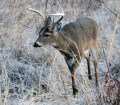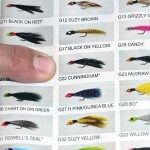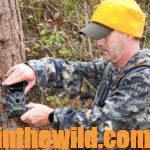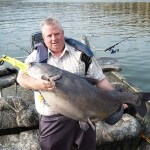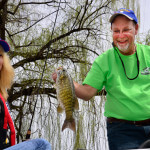John’s Note: Deer hunters often find hunting miserable during the month of December because the deer know more about you than you do about them. The deer know what time you go hunting and what time you break for lunch; when you’ll return to the woods; where you’ve located your tree stands; where you hunt most often; and where you seldom hunt. The deer have psyched you out and outsmarted you. Let’s look at deer hunting in December.
 You’ll have the most odds in your favor to bag an older-age-class buck during the first hour of daylight, the last hour of daylight and 1-2 hours in the middle of the day. The time you hunt makes up only half of the equation for deer-hunting success. You also must consider where you hunt.
You’ll have the most odds in your favor to bag an older-age-class buck during the first hour of daylight, the last hour of daylight and 1-2 hours in the middle of the day. The time you hunt makes up only half of the equation for deer-hunting success. You also must consider where you hunt.
During that first hour of daylight, you’ll most likely take an older-age-class buck in or near thick cover as the buck comes back from his feeding site to go to his bedding area or his daylight thick-cover hideout. For the most deer-hunting success, hunt thick-cover areas at least a mile or more from where anyone else comes into the woods during that first hour of daylight. Many early-morning December hunters don’t travel far enough to reach their stand sites well before daylight and climb into their tree stands long before the deer start to move. Here are some keys to deer-hunting success in December.
* Use a Global Positioning System (GPS), and log your stand site and where you plan to leave your vehicle as a waypoint.
* Establish a route from your vehicle to your stand site, and save that route in the memory of your GPS.
* Plan to go to your stand site using the information in your hand-held GPS to navigate with to arrive at the stand site 1 hour before daylight.
 * Know that you have a favorable wind before you go to your stand site to hunt, move as quietly as possible to get to your stand, and take plenty of time to make your trek. Also make very little noise climbing into your stand and preparing to wait on daylight.
* Know that you have a favorable wind before you go to your stand site to hunt, move as quietly as possible to get to your stand, and take plenty of time to make your trek. Also make very little noise climbing into your stand and preparing to wait on daylight.
* Hunt the feeding areas that most people hunt early in the morning or late in the evening in the middle of the day during December. Also hunt scrapes, rubs and bottlenecks during the midday. Remember that hunters have conditioned the deer to expect the most hunting pressure early in the morning and late in the afternoon. Deer realize they will receive the least hunting pressure in the middle of the day when hunters leave the woods to eat lunch.
* Use the same technique as you do for early-morning hunting when you hunt late on a December afternoon. Go to your tree stand early in the afternoon, and mark waypoints from your vehicle to your stand site on your GPS. Then you can stay in your site until black dark and not come out until you can no longer see to shoot.
* Hunt the trails that circle a green field in December. By now, mature bucks know they don’t have to walk out into a green field to learn the identity of the deer feeding there or to learn about a hunter at the green field. If you look carefully, you’ll often locate a dim trail 30 to 50 yards off a green field that bucks will walk to wind-check a green field for danger. The bucks may position themselves on these trails to wait on nightfall before entering those green fields. So, if you take a stand along these trails instead of on the edge of the green field, you’ll greatly improve your chances of bagging an older-age class buck.
 To get John E. Phillips’ Kindle eBooks and print books on hunting deer, “How to Hunt and Take Big Buck Deer on Small Properties,” “How to Hunt Deer Up Close: With Bows, Rifles, Muzzleloaders and Crossbows,” “PhD Whitetails: How to Hunt and Take the Smartest Deer on Any Property,” “How to Take Monster Bucks,” “How to Hunt Deer Like a Pro,” and “Bowhunting Deer: Mossy Oak Pros Know Bucks and Bows,” or to prepare venison, “Deer & Fixings,” click here.
To get John E. Phillips’ Kindle eBooks and print books on hunting deer, “How to Hunt and Take Big Buck Deer on Small Properties,” “How to Hunt Deer Up Close: With Bows, Rifles, Muzzleloaders and Crossbows,” “PhD Whitetails: How to Hunt and Take the Smartest Deer on Any Property,” “How to Take Monster Bucks,” “How to Hunt Deer Like a Pro,” and “Bowhunting Deer: Mossy Oak Pros Know Bucks and Bows,” or to prepare venison, “Deer & Fixings,” click here.
For information on making jerky from your deer to provide a protein-rich snack, you can download a free book from https://johninthewild.com/free-books.

